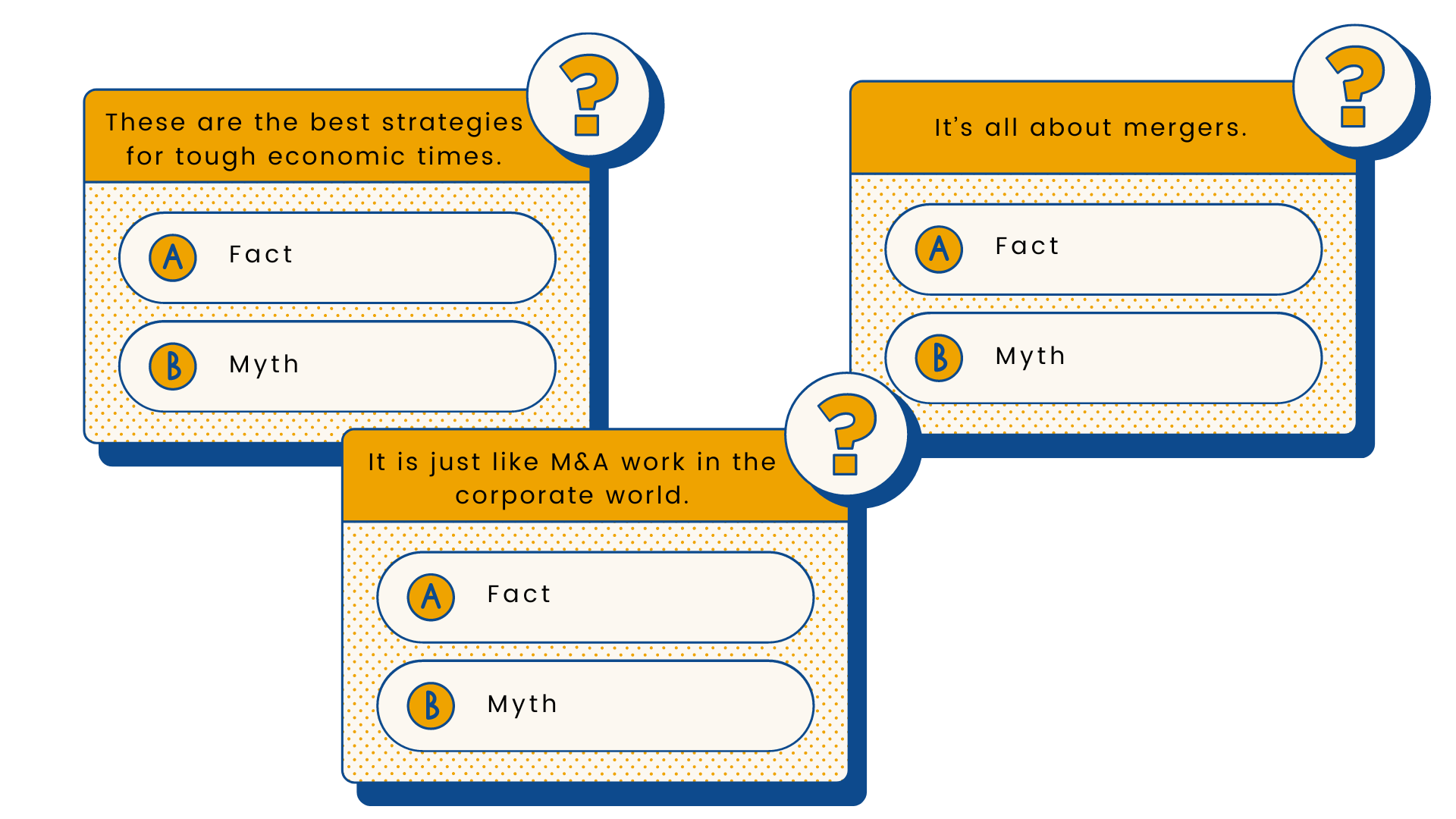3 Nonprofit Merger Myths
A few years ago, Jo DeBolt, Partner Emeritus, broke down the three big myths surrounding nonprofit mergers and we’ve noticed that they still present themselves as considerations when organizations begin thinking about a merger. Over the years, La Piana Consulting has helped develop a growing body of knowledge and practice in this area, and if one thing is true it is that the more we do the more we learn. Because it is a field that is ever growing and evolving, we think it’s helpful to address a few common myths about nonprofit mergers.

Myth #1: These are the best strategies for tough economic times.
Nonprofits typically cite competition for funding and other financial pressures as two of the top factors motivating them to consider merger. However, a merger itself does not generate revenue or reduce expenses. In fact, mergers usually entail short-term costs associated with planning, decision-making, and implementation. Even after a merger is approved, integrating staffing and systems may require continued investments for up to a year or more. And for nonprofits (unlike corporate mergers), the bottom line is first and foremost about mission, so once any “savings” are realized, they are often plowed back into higher-impact programs and services. If anything, making the choice to merge is a big investment decision. In the end, mergers tend to make strong nonprofits stronger. And, while a merger can position an organization for additional revenue opportunities, a merger alone cannot change the market dynamics an organization faces or move a marginal operation into the black if demand is insufficient or the underlying economics just don’t pencil out.
Myth #2: It is just like M&A work in the corporate world.
Nonprofit mergers bear little resemblance to those in the for-profit world. Nonprofits are not “acquired” (i.e. purchased); they merge for strategic reasons. Although it can be tempting for a large nonprofit to consider merger with a smaller organization a simple acquisition, wise leaders recognize that they are creating something that is not additive, but transformative. Both parties bring something to the table, and both partners will emerge from the process changed. This is also why nonprofit mergers are never “one size fits all” and should not be approached as a simple transaction. Nonprofit merger is more than a business decision; there are organizational values and cultures that need to be aligned in order for the merger to succeed. And what is success, when there are no corporate “stakeholders” receiving financial benefit as a result of the merger? Success is the community benefit when the new organization is more effective in advancing its mission.
Myth #3: It’s all about mergers.
Mergers are only one of a number of options available to nonprofits looking for ways to achieve greater efficiency and improve outcomes. As more organizations choose strategic restructuring to further their missions, this entails more than mergers. Recently, we have helped a growing number of clients to create formal affiliations or joint programming agreements to expand existing programs or to create new ones. Often, these partnerships are also supported by business plans to guide the new venture, and they can sometimes (in their own way) be even more challenging than a merger. Administrative consolidation, or shared back-office services, is another choice — one that offers some of the efficiencies of a merger without requiring the same high level of integration. Additionally, networks and other more flexible forms of alliance are creating new ways to collaborate, particularly across fields and sectors.
Merger can be a powerful choice for nonprofits, but like any strategy, it has its utility as well as its limitations. We must be rigorous in testing our assumptions and expectations about what merger is, what it isn’t, and how it — and other collaborative strategies — can lead to greater social impact.
If we’ve successfully busted some myths and you are considering ways to make your partnerships stronger, are brainstorming ways to have more impact or just thinking about how best to achieve your mission, our Merger & Alliance Toolkit provides practical information and concrete guidance to help you move forward. Download the toolkit here.


Comment section